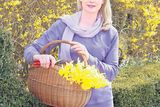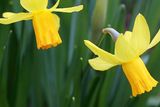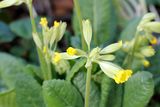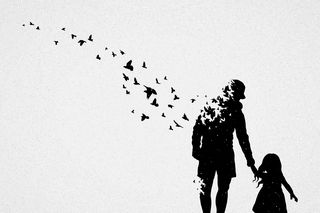Mellow with yellow
Create a year-round glow in your garden





Brighten your garden all year round with some flowering yellow plants
If it wasn't for the colour yellow, I would be utterly depressed after all the grey, dull days of the past year. When forsythia comes into flower, along with the hundreds of daffodils that we planted over the past number of years, I start to feel positive.
Yellow is such a visible colour and it lifts you out of a dreary winter like no other. At this stage, the very early narcissi are going over and are being replaced by the taller and slightly less robust, but utterly glamorous, double flower and trumpet daffodils.
The season can be long, provided you choose a number of different varieties to keep interest going from the very early days of February into late April.
Mind you, if that gulf stream doesn't move a bit closer to us in the next week or two, we could have daffodils flowering well into May, such are the miserable temperatures of late.
Looking forward is the name of the game and I refuse to be beaten. So, I'm already planning to add in even more yellow-flowering plants to keep the garden looking as cheery as possible.
The coronilla, with its yellow pea-like flowers, starts its flowering season in October and lasts for around eight months. When it finally stops flowering, I have the very beautiful calceolaria, which starts flowering in late May, right into October.
On a south-facing wall, we have a Fremontodendron californicum with its vivid yellow blooms during the summer. Then, just when I feel my sunshine slipping away, out pops Sternbergia lutea and yellow autumn crocus. Then it's back to spring crocus, daffodils and forsythia, and around we go again.
In my humble opinion, the very best choice of colours to complement yellow are blue or purple. Forget-me-not are a fantastic backdrop for yellow tulips and late daffs.
I gave a talk the other evening about planting up a spring garden and we were pretty much all in agreement that the little 'Tete-a-Tete' narcissi is worth its weight in gold. It not only comes into flower much earlier than most of the others, but it also withstood all that horrible March weather and remained standing to attention.
If you didn't manage to plant any of the bulbs in September, cheat a little and add a few pots to your containers; then, after they go over, you can plant them into the garden.
Forsythia is an unruly plant if left unchecked – so, after flowering, I give it a short back and sides, especially around the base. If you don't have the space for the bigger version of this cheery plant, try the lovely little dwarf one called Forsythia intermedia 'Nana', which is ideal for smaller gardens or indeed a patio.
Don't be afraid to ask your local garden centre if there is an alternative to a plant that you fancy but think it's too big for your garden. There are so many good horticulturists working in garden centres and nurseries and they will willingly give advice. If you are spending a few bob with them, the least you can expect is a bit of information about the plant you intend to purchase.
I once planted up to 500 daffodils, only to be bitterly disappointed when not a single one flowered. I put a lot of the blame on myself because I was a bit economical with the planting holes – they should be planted deep for best results.
I can't have been that lazy with all 500, though, so I share the blame with the pesky rabbits that seem to think digging up any bulb I plant and tossing it around is great fun.
Now, we grow a lot of our bulbs in pots and introduce them as flowering plants, rather than planting them in the normal way. I'm all on for a bit of craic, but not 500 bulbs worth of frisbee fun. Rabbits are nosy and they tend to go after anything new in the garden, in particular bulbs. Don't let them win that particular battle.
I have created a little list of my favourite yellow-flowering plants for you to consider for your own little patch, should they take your fancy.
Yellow-flowering plants
• Spring
Narcissus bulbocodium, Narcissus 'Tete-a-Tete' and Narcissus 'Lemon Silk' – all ideal for rock gardens and containers. I also love the large trumpet and double-flowered ones; Forsythia intermedia; Primula vulgaris; Erythronium 'Jeannine'; Tulipa 'West Point'; Euphorbia robbiae is a great backdrop for tulips; Magnolia 'Yellow River'.
• Summer
Rosa banksiae – tiny buttery yellow roses, beautiful in May; Calceolaria integrifolia;
Fremontodendron californicum; Fremontodendron 'California Glory'; Rudbeckia deamii.
• Autumn
Coronilla valentina subsp glauca 'Citrina' – my number-one favourite yellow-flowering plant; Sternbergia lutea.
• Winter
Jasminum nudiflorum;
Mahonia x media 'Winter Sun'.
Join the Irish Independent WhatsApp channel
Stay up to date with all the latest news



















